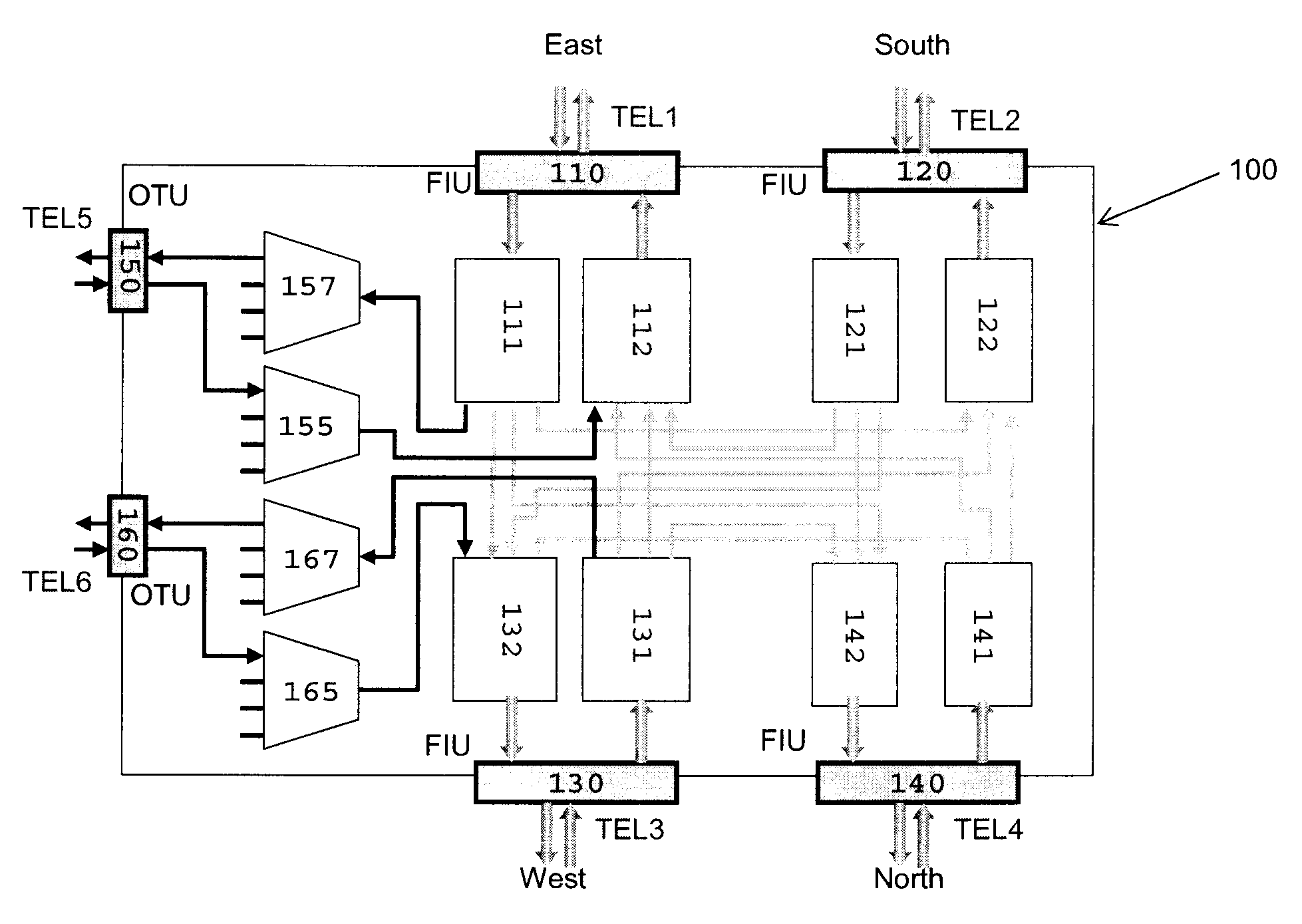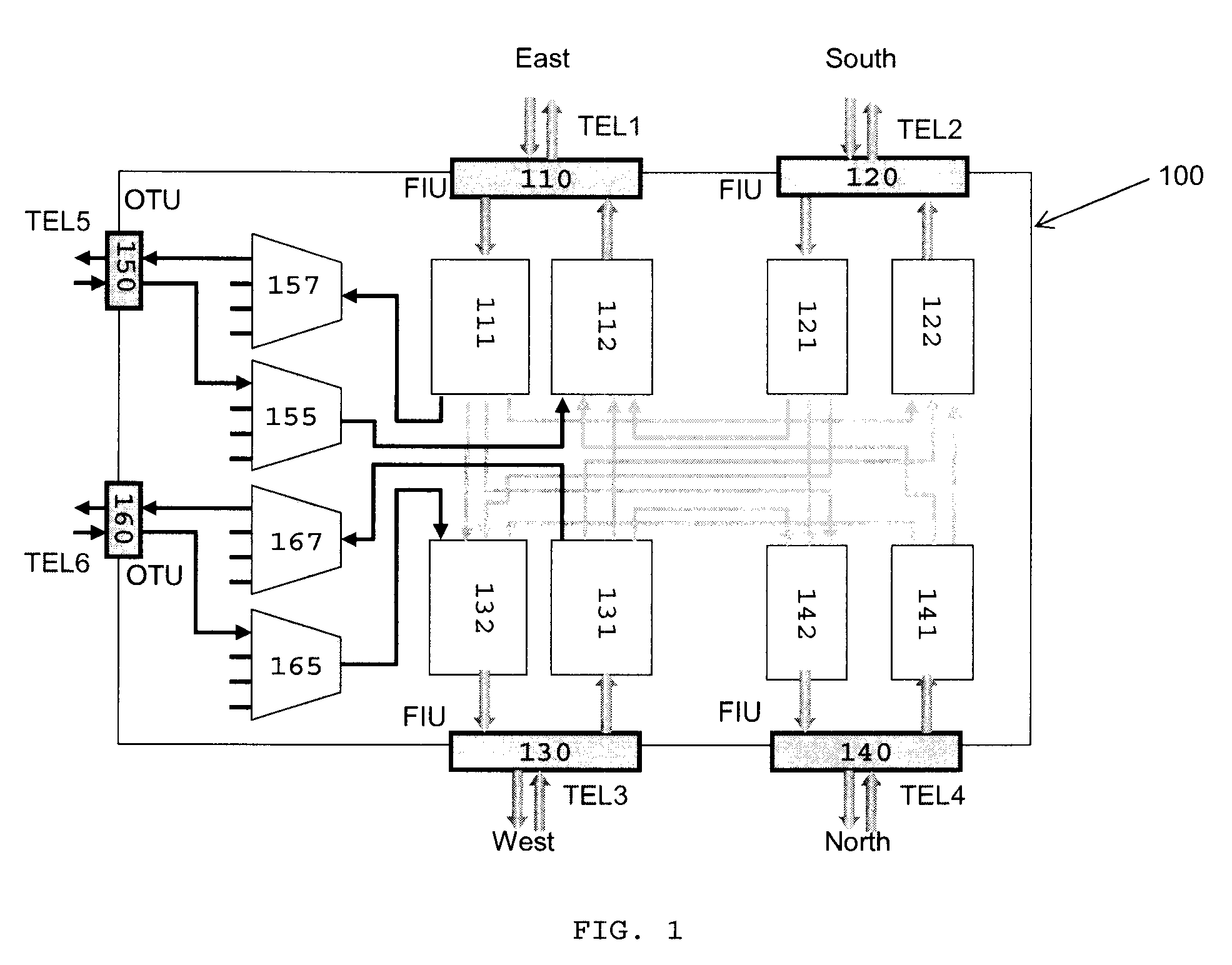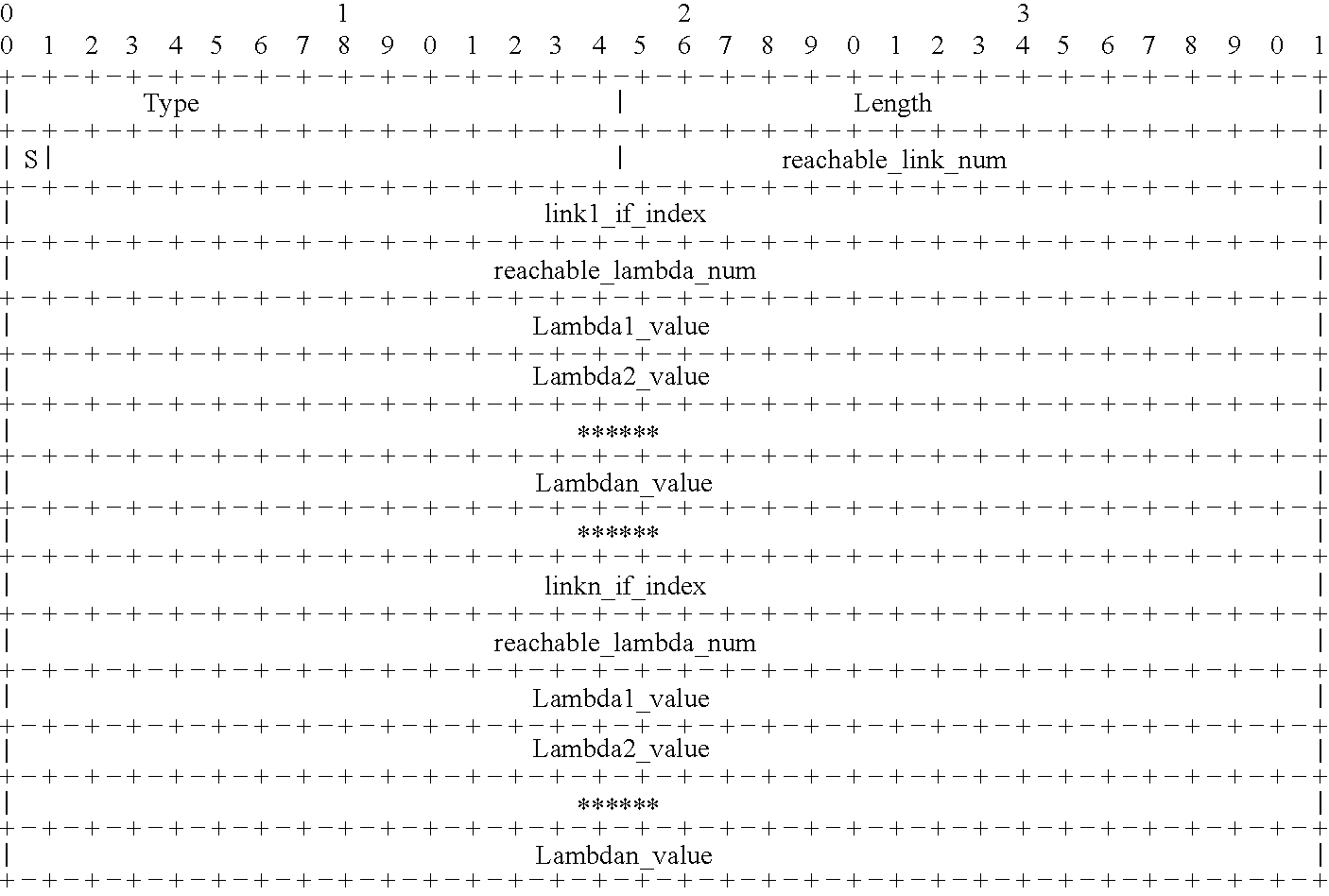System for utilizing wavelength reachability and wavelength occupation status information to describe cross-connection capabilities in optical networks
a technology of optical network and wavelength reachability, applied in the field of optical network communication, can solve the problems of low rate for establishing a successful service path, inability to establish inability to achieve wavelength service between two nodes, so as to reduce the amount of information distributed and improve network efficiency
- Summary
- Abstract
- Description
- Claims
- Application Information
AI Technical Summary
Benefits of technology
Problems solved by technology
Method used
Image
Examples
Embodiment Construction
[0017]The following discussion is presented to enable a person skilled in the art to make and use the invention. The general principles described herein may be applied to embodiments and applications other than those detailed below without departing from the spirit and scope of the present invention as defined herein. The present invention is not intended to be limited to the embodiments shown, but is to be accorded the widest scope consistent with the principles and features disclosed herein.
[0018]In the present invention, cross-connection capabilities of a Wavelength Division Multiplexing (WDM) device may be abstracted into wavelength reachability and wavelength occupation status information. The wavelength reachability and wavelength occupation status information may be distributed over a WDM network through a routing protocol, such as an extended Open Shortest Path First (OSPF) protocol; and may serve as a base of service path calculations for intelligent routing algorithms, so ...
PUM
 Login to View More
Login to View More Abstract
Description
Claims
Application Information
 Login to View More
Login to View More - R&D
- Intellectual Property
- Life Sciences
- Materials
- Tech Scout
- Unparalleled Data Quality
- Higher Quality Content
- 60% Fewer Hallucinations
Browse by: Latest US Patents, China's latest patents, Technical Efficacy Thesaurus, Application Domain, Technology Topic, Popular Technical Reports.
© 2025 PatSnap. All rights reserved.Legal|Privacy policy|Modern Slavery Act Transparency Statement|Sitemap|About US| Contact US: help@patsnap.com



